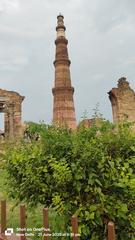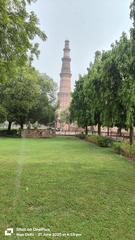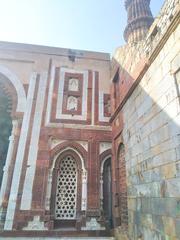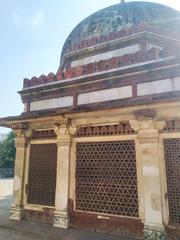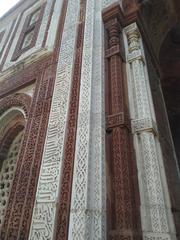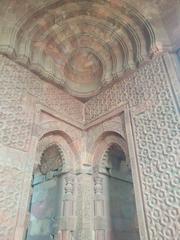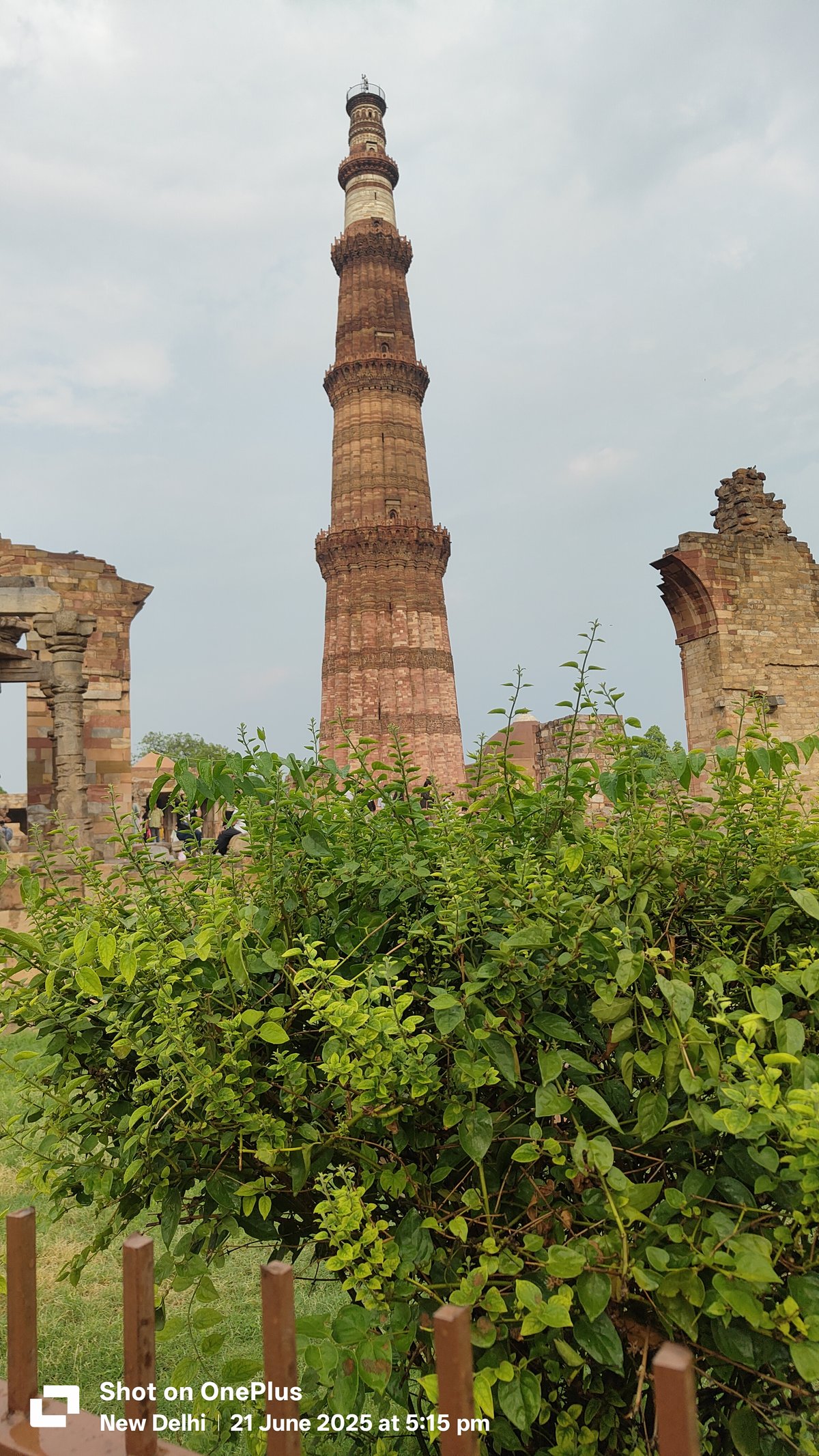
Guide to Visiting Qutub Minar Complex, Delhi, India
Publish Date: 16/07/2024
Introduction
The Qutub Minar Complex in Delhi, India, is a historical marvel and a UNESCO World Heritage Site that attracts millions of tourists annually. Known for its remarkable architectural feats that blend Indo-Islamic art and craftsmanship, the complex stands as a testament to the early Islamic rule in India. Built in the late 12th century by Qutb-ud-din Aibak, the Qutub Minar is a towering minaret reaching a height of 73 meters. This iconic structure symbolizes the victory of the Delhi Sultanate over the Rajput rulers, and its architecture continues to fascinate visitors with its intricate carvings and inscriptions (UNESCO; Cultural India). The complex also houses other significant monuments such as the Quwwat-ul-Islam Mosque, the Alai Darwaza, and the Iron Pillar, each contributing to the site’s rich historical and cultural tapestry (Britannica). This guide offers a comprehensive overview of the Qutub Minar Complex, covering its history, architecture, visiting hours, ticket prices, travel tips, and nearby attractions to ensure you have a complete and enriching experience.
Table of Contents
- [Origins and Construction](#origins-and-constructionorigins-and-construction)
- [Architectural Marvel](#architectural-marvelarchitectural-marvel)
- [Historical Significance](#historical-significancehistorical-significance)
- [Quwwat-ul-Islam Mosque](#quwwat-ul-islam-mosquequwwat-ul-islam-mosque)
- [Alai Darwaza](#alai-darwazaalai-darwaza)
- [Iron Pillar](#iron-pillariron-pillar)
- [Restoration and Preservation](#restoration-and-preservationrestoration-and-preservation)
- [UNESCO World Heritage Site](#unesco-world-heritage-siteunesco-world-heritage-site)
- [Cultural and Religious Significance](#cultural-and-religious-significancecultural-and-religious-significance)
- [Modern-Day Relevance](#modern-day-relevancemodern-day-relevance)
- [Visitor Experience](#visitor-experiencevisitor-experience)
- [Visitor Tips](#visitor-tipsvisitor-tips)
- [Nearby Attractions](#nearby-attractionsnearby-attractions)
- [Festivals and Events](#festivals-and-eventsfestivals-and-events)
- [Practical Information](#practical-informationpractical-information)
- [FAQ](#faqfaq)
- [Call to Action](#call-to-actioncall-to-action)
- [Summary](#summarysummary)
- [References](#referencesreferences)
Origins and Construction
The Qutub Minar, a towering 73-meter high minaret, is a quintessential example of Indo-Islamic architecture. Its construction began in 1192 under the orders of Qutb-ud-din Aibak, the founder of the Mamluk Dynasty, to celebrate the victory of Muhammad Ghori over the Rajput king, Prithviraj Chauhan. The minaret was completed by Aibak’s successor and son-in-law, Iltutmish, who added three more stories to the structure (Cultural India).
Architectural Marvel
The Qutub Minar is renowned for its intricate carvings and inscriptions in Arabic, which adorn its red sandstone and marble surfaces. The minaret consists of five distinct stories, each marked by a projecting balcony supported by muqarnas corbels. The first three stories are made of red sandstone, while the fourth and fifth stories are constructed of marble and sandstone (UNESCO).
Historical Significance
The Qutub Minar complex is not just a single monument but a collection of significant structures that reflect the architectural and cultural achievements of the early Islamic rulers in India. The complex includes the Quwwat-ul-Islam Mosque, the Alai Darwaza gate, the Alai Minar, and the Iron Pillar, among others (Wikipedia).
Quwwat-ul-Islam Mosque
Commissioned by Qutb-ud-din Aibak, the Quwwat-ul-Islam Mosque is the oldest mosque in northern India. It was constructed using materials from 27 demolished Hindu and Jain temples, which is evident from the intricately carved pillars and other architectural elements that were repurposed (Britannica).
Alai Darwaza
The Alai Darwaza, built by Alauddin Khalji in 1311, is a masterpiece of Indo-Islamic architecture. This grand gateway is adorned with intricate carvings and inlaid marble decorations, showcasing the artistic excellence of the period (UNESCO).
Iron Pillar
One of the most intriguing elements of the Qutub Minar complex is the Iron Pillar, which dates back to the 4th century AD. Originally erected by Chandragupta II Vikramaditya in Udayagiri, it was later moved to its current location by Anangpal in the 10th century. The pillar is renowned for its rust-resistant composition, which has puzzled metallurgists for centuries (Wikipedia).
Restoration and Preservation
The Qutub Minar has undergone several restorations over the centuries due to damage caused by lightning and earthquakes. The most significant restoration efforts were undertaken by Firoz Shah Tughlaq in the 14th century and Sikandar Lodi in the early 16th century. These efforts have ensured that the minaret remains one of the best-preserved examples of early Islamic architecture in India (Britannica).
UNESCO World Heritage Site
In 1993, the Qutub Minar complex was designated as a UNESCO World Heritage Site, recognizing its outstanding universal value and the need for its preservation. The site attracts millions of visitors each year, making it one of the most popular tourist destinations in India (UNESCO).
Cultural and Religious Significance
The Qutub Minar complex holds immense cultural and religious significance. It symbolizes the advent of Muslim rule in India and the establishment of the Delhi Sultanate. The complex also serves as a testament to the fusion of Hindu and Islamic architectural styles, reflecting the cultural syncretism of the period (Cultural India).
Modern-Day Relevance
Today, the Qutub Minar complex continues to be a site of historical and cultural importance. It hosts the annual Qutub Festival, a three-day event that celebrates the monument’s heritage with music, dance, and cultural performances. The festival attracts artists and visitors from across the country, further cementing the site’s status as a cultural landmark (Daily Art Magazine).
Visitor Experience
Visitors to the Qutub Minar complex can explore its various monuments and learn about their historical significance through guided tours and informational plaques. The site is open daily from sunrise to sunset, with an entry fee of INR 30 for Indian citizens and INR 500 for foreign nationals. The best time to visit is during the cooler months from November to March (TripSavvy).
Visitor Tips
- Entry Fees and Timings: Open daily from sunrise to sunset. Entry fee is INR 30 for Indian citizens and INR 500 for foreign nationals (TripSavvy).
- Best Time to Visit: Visit between November and March for cooler weather and fewer crowds.
- Accessibility: Nearest Metro station is Qutub Minar on the Yellow Line. Auto rickshaws, buses, and taxis are also available (Vacation India).
Nearby Attractions
- Mehrauli Archaeological Park: Adjacent to the Qutub Complex, home to over 100 historical monuments (Vacation India).
- Garden of Five Senses: A beautifully landscaped park offering a sensory experience (Wanderwish).
- Hauz Khas Village: Trendy neighborhood known for its vibrant nightlife, art galleries, boutiques, and cafes (Wanderwish).
Festivals and Events
- Qutub Festival: Annual three-day cultural event featuring music, dance performances, and food stalls, held between November and December (Panda Reviewz).
Practical Information
- Safety and Regulations: Climbing the Qutub Minar is prohibited. Visitors should avoid bringing bulky items and tripods into the complex (Daily Art Magazine).
- Photography: Allowed within the complex, but flash photography is prohibited in certain areas (Maya M. Tola).
FAQ
What are the Qutub Minar visiting hours?
The complex is open daily from sunrise to sunset. Night visits are available from 7 PM to 10 PM.
How much are the Qutub Minar tickets?
Tickets cost INR 30 for Indian citizens and INR 500 for foreign nationals.
What are some nearby attractions?
Nearby attractions include the Mehrauli Archaeological Park and the Lotus Temple.
Is there a special event at the Qutub Minar complex?
Yes, the annual Qutub Festival features music, dance, and cultural performances.
Are guided tours available?
Yes, guided tours are available and highly recommended for a comprehensive understanding of the site.
Call to Action
Explore more about Delhi’s historical sites by downloading our mobile app Audiala. Follow us on social media for updates on upcoming events and new posts about India’s rich cultural heritage.
Summary
The Qutub Minar Complex stands as a beacon of India’s rich historical and architectural heritage. From the towering Qutub Minar itself, built by Qutb-ud-din Aibak and completed by Iltutmish, to the intricate artistry of the Quwwat-ul-Islam Mosque and the mysterious Iron Pillar, the complex offers a deep dive into the Indo-Islamic architectural brilliance that characterized early Islamic India (UNESCO; Cultural India). The site’s recognition as a UNESCO World Heritage Site underscores its universal value and the importance of its preservation. Visitors are encouraged to explore the complex during the cooler months from November to March for the most pleasant experience, and guided tours are highly recommended to gain deeper insights into the historical significance of each monument (TripSavvy). The annual Qutub Festival further enriches the site’s cultural relevance, celebrating its legacy with music, dance, and cultural performances (Daily Art Magazine). Whether you are a history enthusiast, an architecture aficionado, or simply a curious traveler, the Qutub Minar Complex offers a captivating glimpse into India’s storied past.
References
- Cultural India. (n.d.). Qutub Minar. Retrieved from https://www.culturalindia.net/monuments/qutub-minar.html
- UNESCO. (n.d.). Qutb Minar and its Monuments, Delhi. Retrieved from https://whc.unesco.org/en/list/233
- Britannica. (n.d.). Qutb Minar. Retrieved from https://www.britannica.com/topic/Qutb-Minar
- Daily Art Magazine. (n.d.). Qutub Minar Complex. Retrieved from https://www.dailyartmagazine.com/qutub-minar-complex/
- TripSavvy. (n.d.). Delhi’s Qutub Minar: The Complete Guide. Retrieved from https://www.tripsavvy.com/delhis-qutub-minar-the-complete-guide-4172571
